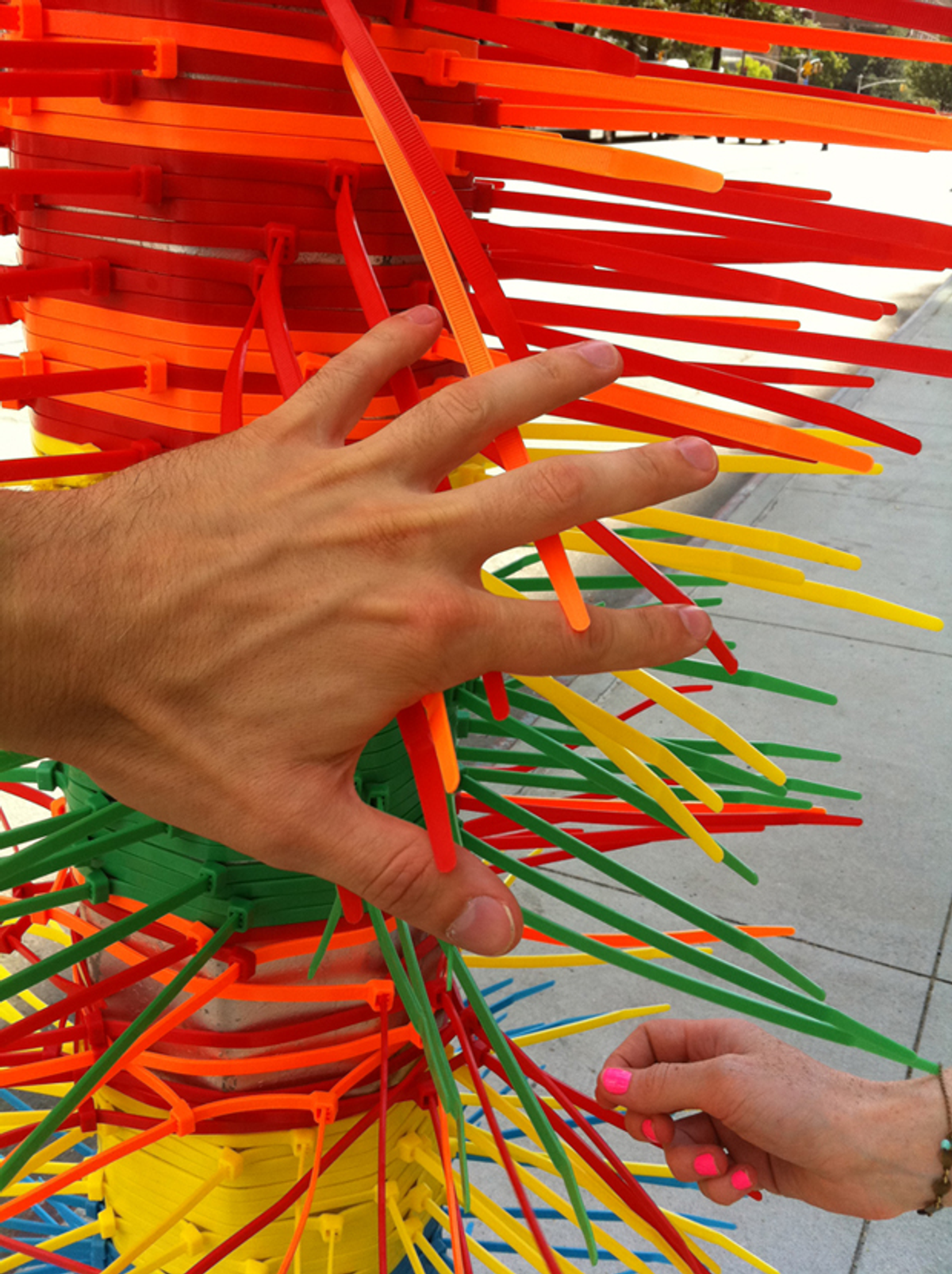 Walking up Lafayette Street from Bond in New York City, I'm used to certain thoughts bubbling to mind as my body autopilots through urban space back to the L train. Is Rihanna still up on that billboard? Should I stop in Astor Wines for a nice bourbon bottle? Will I ever actually see a costumed member of the Blue Man Group pop out for a smoke? As such serious concerns mix into the post-work mind chatter, it's a welcome surprise when something shakes me from my passive traversing and offers up an invitation to tactile interaction.
Walking up Lafayette Street from Bond in New York City, I'm used to certain thoughts bubbling to mind as my body autopilots through urban space back to the L train. Is Rihanna still up on that billboard? Should I stop in Astor Wines for a nice bourbon bottle? Will I ever actually see a costumed member of the Blue Man Group pop out for a smoke? As such serious concerns mix into the post-work mind chatter, it's a welcome surprise when something shakes me from my passive traversing and offers up an invitation to tactile interaction.
For the month of August The Department of Transportation asked ANIMUS Art Collective to install their "Flaming Cactus" on 12 lamp posts around Astor Place. The installation is part of the DOT's Summer Streets program, which transforms our best public sphere -- THE STREETS -- into an interconnected corridor for play, exercise and casual strolling. Running for the fourth year, the list of events reveals what this program is really about: a resourceful and playful attempt to increase awareness of healthy lifestyle and healthy urban space. One piece of the puzzle to boosting our city's humble standing in the nation's Well-Being Index.
Parallel to the DOT approach of transforming city infrastructure into city park, ANIMUS' project works with the existing architecture of the street. Inexpensive fluorescent cable-ties are strung together and wrapped around selected lampposts. Densely wound together the visual effect is bold bands of pop-industrial color that scream for a passerby's attention. Clearly not everyone's taste, but I'll admit I admire most design moves that seem to originate with a U-Line catalog. Aesthetics aside, if the goal is to create a playfully disruptive gesture on a tight budget, Flaming Cactus is undeniably successful.
More fascinating, however, is that the installation goes beyond the visual. Approaching this curiously colorful cactus from afar, all I could think to do was walk up and touch it, run my fingers through it, pull on it. And this interaction is actually a breakthrough. Barring cherry blossoms on April trees, when is the last time something caught your eye in the street and your immediate reaction was to actually want to touch it?
As a designer who cares about connecting to an audience on a meaningful level, this has me really excited. What other imagined devices could we use to offer a similar experience? It's a nice reminder that we don't need a touch-screen device to get someone to interact. And how could we take it a step further? Add another layer of meaning? What if each plastic strip contained a word, a sentence, a story? Would reading with our fingers and our eyes at the same time strengthen our connection to the communication? I'm betting yes.
Copyright F+W Media Inc. 2011.
Salon is proud to feature content from Imprint, the fastest-growing design community on the web. Brought to you by Print magazine, America's oldest and most trusted design voice, Imprint features some of the biggest names in the industry covering visual culture from every angle. Imprint advances and expands the design conversation, providing fresh daily content to the community (and now to salon.com!), sparking conversation, competition, criticism, and passion among its members.









Shares